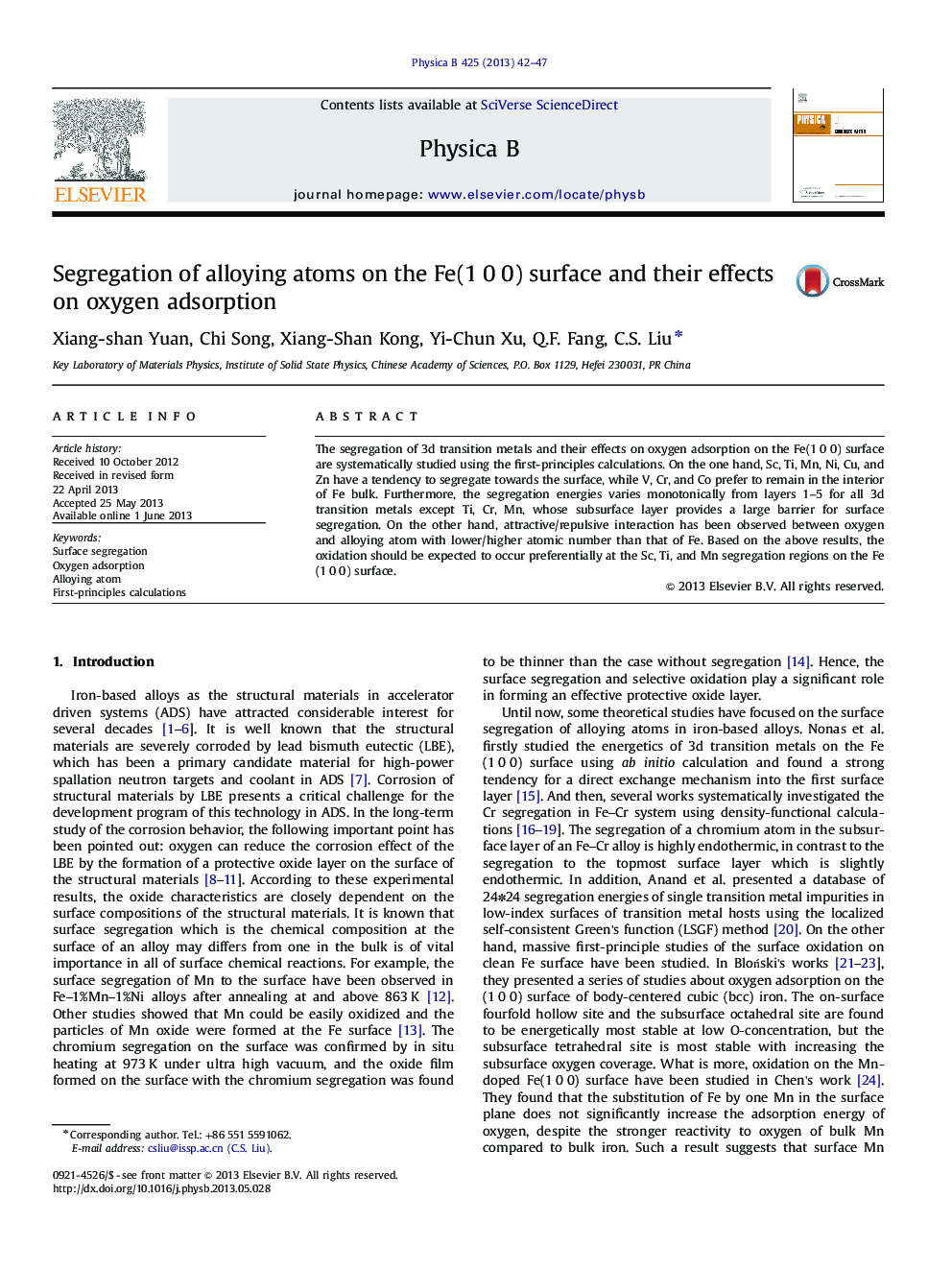| Article ID | Journal | Published Year | Pages | File Type |
|---|---|---|---|---|
| 1809924 | Physica B: Condensed Matter | 2013 | 6 Pages |
Abstract
The segregation of 3d transition metals and their effects on oxygen adsorption on the Fe(1Â 0Â 0) surface are systematically studied using the first-principles calculations. On the one hand, Sc, Ti, Mn, Ni, Cu, and Zn have a tendency to segregate towards the surface, while V, Cr, and Co prefer to remain in the interior of Fe bulk. Furthermore, the segregation energies varies monotonically from layers 1-5 for all 3d transition metals except Ti, Cr, Mn, whose subsurface layer provides a large barrier for surface segregation. On the other hand, attractive/repulsive interaction has been observed between oxygen and alloying atom with lower/higher atomic number than that of Fe. Based on the above results, the oxidation should be expected to occur preferentially at the Sc, Ti, and Mn segregation regions on the Fe(1Â 0Â 0) surface.
Related Topics
Physical Sciences and Engineering
Physics and Astronomy
Condensed Matter Physics
Authors
Xiang-shan Yuan, Chi Song, Xiang-Shan Kong, Yi-Chun Xu, Q.F. Fang, C.S. Liu,
